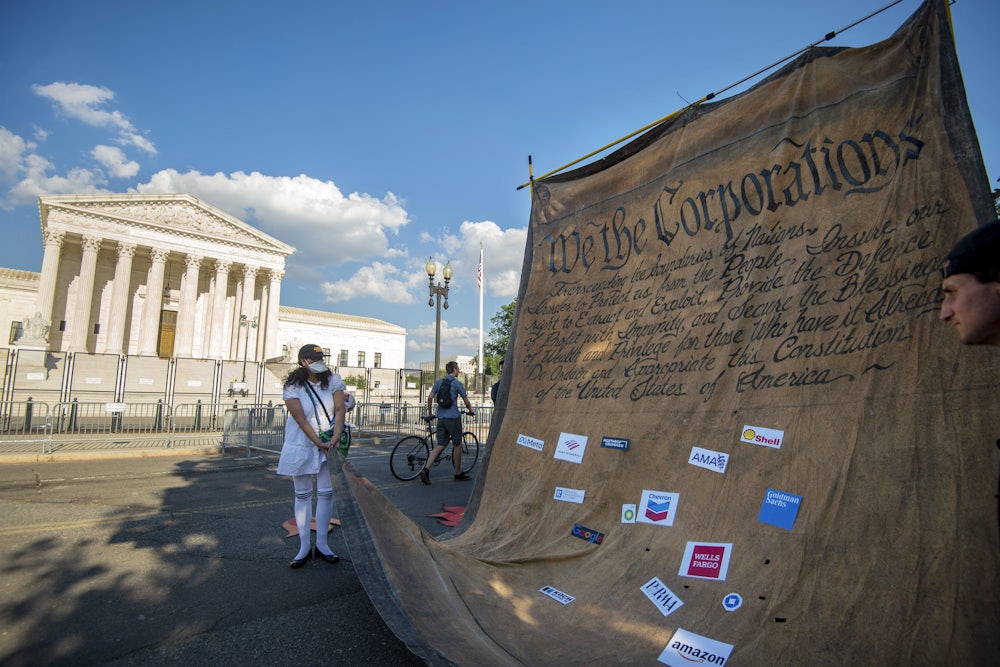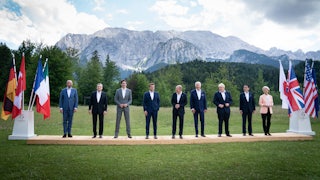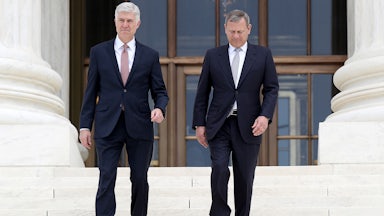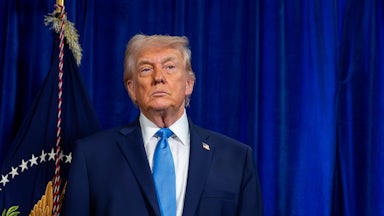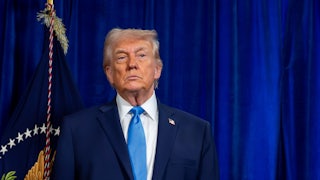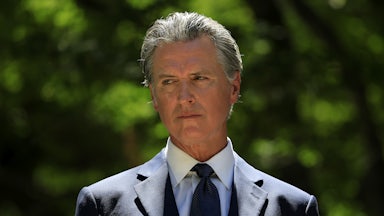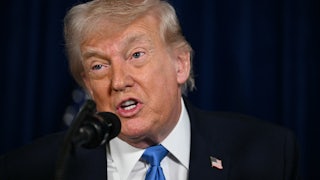The members of the ultraconservative Supreme Court supermajority have, of late, repeatedly insisted that they are conscientious jurists, not “political hacks.” This pose is getting harder to sustain. In fact, it now appears that these headstrong right-wing justices no longer care enough to keep up appearances as judicious callers of balls and strikes. The masks are off: This is the unavoidable takeaway from their end-of-term decision in West Virginia v. Environmental Protection Agency, which bars the EPA from executing the Clean Air Act’s explicit command to deploy the “best system for emission reduction” to fight global warming.
More than any of the cascade of ostentatiously hard-right decisions this term—more even than its Dobbs v. Jackson Women’s Health Organization repudiation of a half-century-old constitutional right to abortion—this decision confirms clues from prior terms: that the overriding priority of this court is augmenting its own power. Chief Justice John Roberts’s opinion for the court fairly flaunts his intention to claim the role of final arbiter of substantially any major battle it chooses to pluck from the nation’s policy or political agendas.
Further, the decision manifests—indeed, as pointedly observed by liberal Justice Elena Kagan’s dissent, it reaffirms—that, on global warming–related matters, these ultraconservative justices’ modus operandi has “from the beginning” been to “obstruct” the EPA and to conform national policy to the agendas of their Republican patrons and sponsors and the megadonors who fund those sponsors—who, lest we forget, funded the campaigns that secured these justices’ nominations and confirmations. Forget the text or purpose of relevant law, fidelity to traditional conservative “textualist” pretensions, or even the interests of relevant big businesses—in this case the electric power industry, which strongly supported the EPA’s climate strategy.
However edgy these conclusions may seem to those who lionized the status quo ante, they are compelled by three undeniable—and undenied—aspects of this decision to gut the nation’s enacted program to address global warming.
First, the court had no business taking this case at all, under long-standing conventions embraced across the ideological spectrum, certainly by judges purporting to be conservative—let alone to convert the matter into a platform to enable themselves to micromanage future EPA regulatory efforts.
In the case, the court reviewed the authority asserted in 2015, by President Barack Obama’s EPA, when it adopted a regulation titled the Clean Power Plan. The gist of this complex and lengthy regulation was the agency’s determination that the “best system for emission reduction,” which it was mandated to prescribe for “stationary sources”—primarily electric power utilities—by Section 111 of the Clean Air Act, was to impose emission limits that effectively spurred providers not simply to modify existing facilities but to switch from coal-fired to natural gas or renewable–powered facilities. In 2020, coal-producing states West Virginia and allies challenged the rule in the Supreme Court.
The challengers faced a problem: The rule didn’t actually exist. President Donald Trump had rescinded his predecessor’s regulation, a move itself challenged in the U.S. Court of Appeals for the D.C. Circuit by environmental groups and allied state governments. Then, after Joe Biden succeeded Trump in 2021, EPA’s new management announced that it would not resuscitate Obama’s rule. Instead, it would devise a new program. In effect, EPA opponents asked the Supreme Court to dictate in advance legal restrictions for a new regime as yet undisclosed.
In effect, granting such relief would constitute issuing an “advisory opinion”—verboten to federal judges by a constitutional requirement that they adjudicate only actual “cases or controversies,” involving existing or past facts disputed by adversarial parties, not hypothetical future disputes. This principle was laid down in 1793, when the Supreme Court sent a letter to President George Washington denying his request for the court’s opinion on the legal status of the nation’s relations with France’s new revolutionary government. It has been honored ever since, as a bulwark of judicial restraint. Until now. As Justice Kagan noted in dissent, “This Court could not wait—even to see what the new rule says—to constrain EPA’s efforts to address climate change.”
So much for the “judicial modesty” touted by Chief Justice Roberts in his 2005 job interview confirmation hearing. (And so much for the conservatives’ persistent claims, in several other rulings this term, that “deeply rooted history” is a paramount concern.)
Second, on the merits of its de facto advisory opinion favorable to EPA’s opponents, the ultraconservative justices not only flouted—overtly—the actual text of the Clean Air Act, as well as the undisputed purpose of the law and its framers. They concocted a workaround by unfurling novel doctrinal excuses for shelving the textualist-originalist credos to which conservative self-proclaimed “constitutionalists” profess fidelity.
Obama’s EPA, in the regulation that, though withdrawn, was reviewed and held invalid by the court, faithfully followed Section 111 of the Act in determining that incentivizing, facilitating, and in part prescribing the replacement of coal-fired power facilities with less polluting technologies was the “best system for emission reduction.” Roberts and his colleagues did not—could not—deny this. Instead, they fashioned a new doctrine, which, in their hands, empowers them to set aside what a law actually says. The fault the conservative majority found with the EPA’s approach was that, “rather than focus on improving performance of [existing facilities at] individual sources, it would] ‘improve the overall power system by lowering the carbon intensity [limits prescribed for] power generation,” thereby “forcing a shift through the power grid from one type of energy source to another.”
Although the EPA’s reading of “best system” was substantively accurate, and, indeed, essential to the agency’s assigned mission of cost-effectively and permanently bringing carbon dioxide emissions under control, Roberts disallowed the approach. This, he asserted, was because it ran afoul of something called the “major questions” doctrine. Revealingly, Roberts never defined precisely what he understood this doctrine to mean or when it should be invoked. Instead, he cited certain cases in which the doctrine had been applied, starting with a 2000 decision barring the Food and Drug Administration from regulating tobacco products as “drugs.”
What Roberts did not mention was that, in that case, and in all (the few) subsequent cases following it, the agency had relied on admittedly general and rarely used language to regulate activities it had not traditionally regulated and which were not within the agency’s core mission, as widely understood and reflected in practice. This distinction was extensively discussed in the oral argument, not only by the liberal justices but by Justice Clarence Thomas and, especially, by Justice Amy Barrett. Barrett endorsed Justice Kagan’s observation that prior major questions cases involved agency actions that were not merely a “big deal” but were also “outside the agency’s wheelhouse” and “not staying in its lane,” whereas, in the West Virginia case, Barrett pointed out to West Virginia’s lawyer, “here, if we’re thinking about EPA regulating greenhouse gases, well, there’s a match between the regulation and the agency’s wheelhouse.”
In effect, West Virginia and its allies were challenging not what the agency was covering with its regulation but how it chose to regulate. Never before had the court accepted such an invitation to micromanage an executive branch effort to discharge a statutory assignment over subject matter at the core of its mission. But in their decision, Barrett and her colleagues on the court’s right skipped past this critical doctrinal constraint on their power and turned the “major questions” doctrine into a club enabling them to pulverize any agency action that could have what they consider prohibitively significant economic or political impact. They truncated the qualifications specified in prior cases, that “major questions” does not permit judges to set aside statutory text solely because of a “big deal” real-world economic or political impact, but only if challenged agency action is not “central to the statutory scheme.” Acknowledging that qualification would have required upholding the EPA’s Clean Power Plan approach.
So much for nominee Roberts’s audaciously preposterous pre-confirmation claim that a judge’s role is simply to “call balls and strikes.”
The third eyebrow-raising aspect of the ultraconservatives’ decision to bludgeon the EPA’s (and Congress’s) efforts to combat global warming is the interests they deployed such brazen activism to protect. Reflecting conventional wisdom, The New York Times headlined that the decision was a victory for “business interests challeng[ing] regulations.” But, as noted in an interview by Sean Donahue, a veteran of high-stakes environmental Supreme Court advocacy, “One of the amazing things about this case is that no actual regulated entity petitioned for [the Supreme Court to hear the case] and the power industry almost unanimously supported EPA.” Defending the EPA’s approach to regulating greenhouse gases as parties was a phalanx of megapower companies, including Con Edison, Exelon, National Grid USA, and Pacific Gas & Electric; counsel for these companies—Beth Brinkmann of the elite Washington, D.C., firm Covington & Burling, and a former senior Justice Department official—split oral argument time with the U.S. solicitor general.
In addition, an amicus curiae brief was filed by the Edison Electric Institute, “the national association of all U.S. investor-owned electric companies—the largest entities regulated by the EPA rules under review.” While, EEI’s brief explained, “it may seem counterintuitive that [these large companies] should favor EPA regulatory authority … the surest path [to the industry’s goal of a smooth and ‘expeditious’ shift to natural gas, wind, turbine, solar, and other non-carbon-generated power] is ‘affirming EPA’s authority to regulate GHG emissions under the Act.’”
Donahue observed that “power companies supported EPA because they want regulatory stability, not constant litigation, and they prefer flexible approaches that include things like emissions averaging and trading.” These approaches, of course, are the very types of cost-efficient, flexible, minimally disruptive techniques for displacing fossil fuels that Roberts and his colleagues ruled out of bounds. In doing so, these anti-regulatory judicial zealots did not deign to mention the affected industries’ contrary view, let alone explain why—in this hugely consequential case—the most pro-business court in history ignored a major affected industry in order to bend national environmental policy to fit the interests of West Virginia’s Republican attorney general and his carbon-coddling allies.
As I have written before in these pages, liberals and Democrats must, as they have often been loath to do, take fully on board the implications of this Supreme Court supermajority as a formidable political antagonist protected by life tenure, possessed of a genuinely reactionary vision and agenda. Regarding the regulatory issues affected by this decision, EPA and its allies must (and already appear to) realistically assess where the decision portends follow-on threats and where it leaves open opportunities to exploit. (It could actually have been materially worse, as evidenced by the even more radical concurring opinion of Justices Samuel Alito and Neil Gorsuch.)
In the larger picture, the decision drives home the urgent need to devise realistic strategies to put this brazenly activist court on the political defensive, starting now and persisting into the foreseeable future. That will require messaging and proposals that mobilize Democratic constituencies and donors, and also resonate with independents and even some Republicans. It will require an acknowledgment that the high court is lost to the mischiefs of politics and that there is no going back.
All these audiences must be persuaded to prioritize the court as a live issue in every election and pressure political candidates to relentlessly target the court’s anti-democratic assaults, not only on individual rights like abortion but on legislation that addresses widely felt needs, such as reversing global warming—and cleaning up their rivers and streams and neighborhoods. The encumbrances of the real world remain, no matter how hamstrung the federal government is to respond to them. The Supreme Court has placed new and untenable burdens on the shoulders of ordinary Americans.
